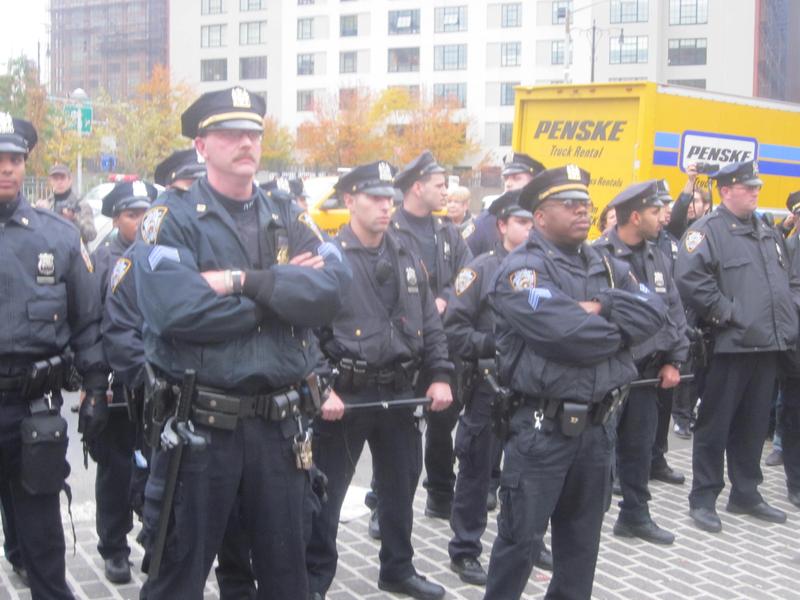
When Officer Peter Figoski responded to an alleged burglary Monday morning and was shot in the face, he became the 166th American police officer to be killed in the line of duty this year.
He also became part of a trend: a 14 percent jump in the number of cops killed over the last year. Nationwide, shooting deaths of cops are up as well, nearly 20 percent.
There are many possible reasons for recent jumps in police deaths. Mayor Michael Bloomberg used the incident Wednesday to again call for more restrictions on illegal gun sales and regulation of what he described as a “vast and growing” online market for firearms. Others point to budget cuts that require more police work from fewer people.
“Law enforcement agencies at the local, state and federal levels are being asked to do more with less," said Craig W. Floyd, Chairman & CEO of the National Law Enforcement Officers Memorial Fund. "And we worry about the impact that is having on officer safety across the country.”
But at the local level, how many of the city’s deaths are due to firearms or due to other causes? How have they changed over time? With the help of the NLEOMF, WNYC examined data on members of the NYPD who died on the job over the last 30 years.
To see how the total number of deaths would be affected without specific causes, click on the type of death in the graphic key. For example, try clicking on "terrorism" to see how that category impacted the numbers in the 2000s.
Beyond personal stories of men and women who gave their lives to public service, there were some interesting patterns over time in a city that has changed drastically from Mayor Koch to Mayor Bloomberg, both in crime rates and policing strategy.
In the chart above created by WNYC’s John Keefe, you can compare the three decades (1980s, 1990s, and 2000-2010), and see the cause of death for officers who died on duty in New York City during each decade. In many cases, the data supports trends that have been reported already and assumptions you can make from those reports. For instance, excepting the tragedy of the 9/11 attacks, the 1980s was a significantly more dangerous decade to be in for NYPD.
Some interesting points to note that we gleaned from the full set of data:
- Of the 111 officers listed as killed on duty between 1980 and 2010, only three were female.
- Had the year 2001 not been marred by the 9/11 attacks, it would have been the only year in three decades without one officer dying on the job. And it would have reduced the deaths in the most recent decade by over half.
- Rookies had as many casualties as veterans near retirement.
- While the vast majority of NYPD members killed were officers, some were detectives, sergeants, lieutenants.
We've divided the cause of deaths here into basic groups. Physical deaths, according to the NLEOMF, can be anything from a heart attack to an aneurysm; while the “other” category includes everything from being struck by a vehicle to aircraft-related deaths, stabbing deaths and drowning.
The police department did not respond to requests for comment.
